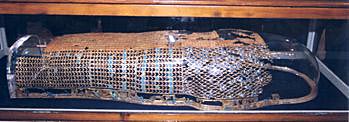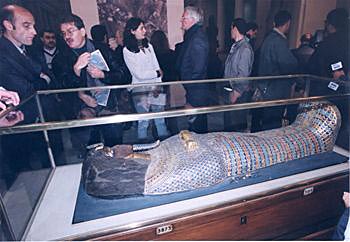

Last week, Egypt held a gala to celebrate the retrieval of the bottom part of the coffin of the Pharaoh Akhenaten more than 70 years after its mysterious disappearance from Cairo's Egyptian Museum, Nevine El-Aref reports.
  |
From 1980, it was on display in a museum in Munich. Its return followed intensive negotiations with the German government which went on for more than 20 years. Now, reunited with its lid -- which never left Cairo -- it is on exhibition at the Egyptian Museum.
Of all the royal coffins ever discovered in the Valley of the Kings, this -- found in KV 55 in 1907 -- has caused the most controversy. It was excavated by Theodore Davies, a wealthy American, and was found to contain a burial from the Amarna period. That is to say, it was a coffin from a tomb at Akhenaten's royal city at Tel Al-Amarna which had been moved to the Valley of the Kings for reburial after the abandonment of that capital on the death of Akhenaten.
The cartouches identifying the owner had been cut out, but since the coffin was interred with canopic jars and part of a shrine that could be identified as belonging to Queen Tiye (Akhenaten's mother), it was thought that it might also belong to her. Further inspection, however, proved that the decayed mummy was a male.
Who, then, was buried in the fine coffin? Was it the Pharaoh Akhenaten himself? Evidence proves that indeed it was. The title "beautiful child of the Aten," a reference to the Pharaoh, was found on the fragmented lower half of the coffin.
Before it was moved to Cairo, the coffin base and lid were on exhibition in Munich for three months, along with other items from the Egyptian Museum. The exhibition was seen by 60,000 visitors.
© Copyright Al-Ahram Weekly. All rights reserved